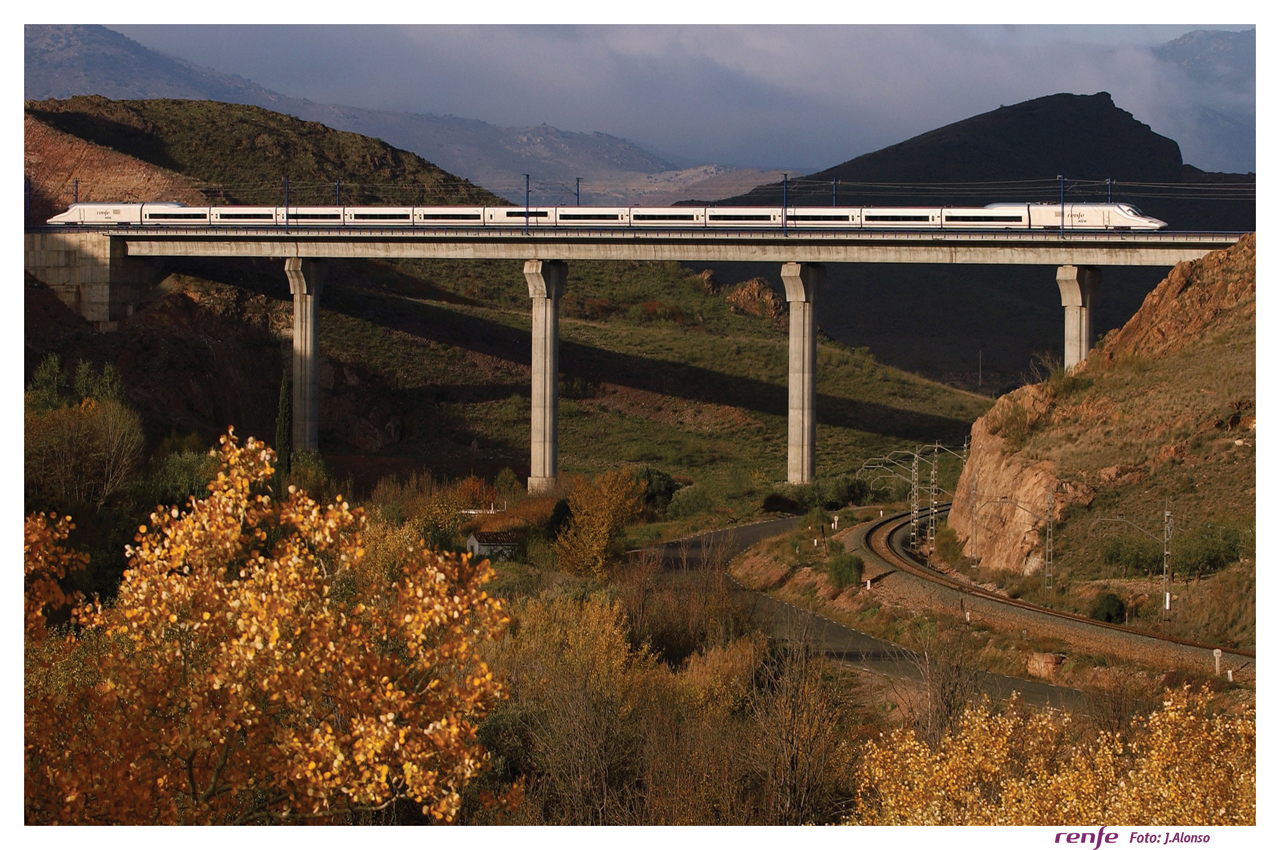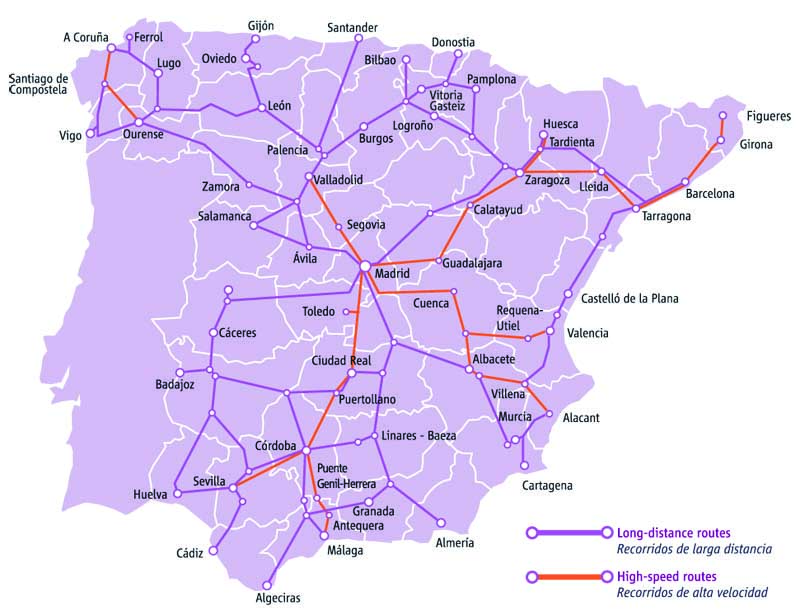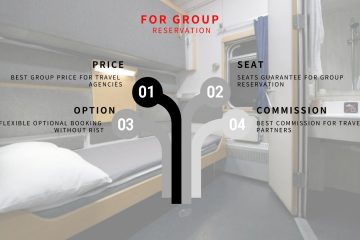Spain train travel a guide to Renfe

The Spanish rail system is one of Europe’s best, with extensive routes, comfortable trains and low prices (by European standards). Renfe is the government-owned company that runs almost all the trains in Spain. There’s a huge range of services, from the high-speed AVE train to local city networks to the cute little trains running along Spain’s north coast.
Over the past three decades, an enormous amount of money has been spent upgrading tracks and building high-speed lines, making Spain’s railway network a fantastic way to explore the country. Rome2rio gives you the lowdown on how to best navigate the nation, from Alicante to Zaragoza.

Renfe train route map in Spain (Credit: Renfe)
12 tips for train travel in Spain
- All long-distance trains require a seat reservation (which comes with your ticket).
- Although you can get a ticket + reservation on the day of travel, it can be up to 60% cheaper to pre-book.
- There is a rule limiting passengers to 25kg of luggage that is never enforced. Otherwise store your bags wherever you can find space around your seat.
- Almost all trains are air-conditioned.
- You may have to run your bags through an X-ray machine at larger stations, so allow extra time.
- Although food is available to buy on many Renfe trains (and 1st-class AVE and Euromed tickets usually include a hot meal + wine served at your seat), you’re free to bring and consume your own food and drink, even alcohol.
- Although the network is extensive, some areas lack train service. The most notable is much of the Costa del Sol in the south. To reach the major tourist town of Marbella, for example, get an AVE train to Malaga and then transfer to a bus.
- Most long-distance tickets allow you to use local Cercanias commuter trains at the start/end of your journey or to any connections within a city. Tickets have a Combinado Cercanias password printed on them, which you can use to get your free local tickets from ticket machines.
- Preferente (1st class) train tickets allow access to special lounges in major train stations.
- Children under 4 travel for free on an adult’s lap – but you’ll still need to get them a ticket in advance.
- On the Cercanias trains, 2 kids per adult up to 6 years can travel for free.
- Only some AVE (high-speed) trains have WiFi. If you’re in 1st class (preferente), WiFi is free. Other passengers should sign up to Renfe’s free +Renfe loyalty scheme to save the few euro cost.
Which train class should I choose?
All Spanish long-distance trains have at least two classes, but some have three.
Preferente: |
|---|
|
Turista Plus: |
|
Turista: |
|
What are the different Spanish train tickets?
Tickets on reserved trains come in three types:
| Flexible: Full fare and good only on a specific train, but can be changed for free or refunded for a small fee |
| Promo+: Discounted fares that can be changed to another train for a variable fee |
| Promo: Cheap tickets that cannot be changed or refunded |
What if I’m travelling with children?
| Child fares (ages 4–13) save about 20% off the cheapest fare in each class |
| Children under 4 travel free if on an adult’s lap, but require a ticket. You can get these for free from booking sites or at stations before you depart. |
How do I book Renfe train tickets?
All medium- and long-distance trains require a seat reservation, which is included with your ticket. These trains price tickets are like the airlines: the sooner you buy, the cheaper the seat. Ticket sales usually open 30 to 90 days before departure. Advance-purchase ticket prices can be 60% less than the full-fare ticket sold on the day of travel.
You can buy all Spanish train tickets online on G2Rail for the same price as booking direct with Renfe (but eliminating language and payment difficulties). Rome2rio offers all types of discounted tickets, as well as 24/7 customer service. You’ll need a printed ticket to board: print your tickets at home, or at larger stations ( see a list here ); you’ll need the ticket’s booking reference number.
If you prefer to book in person, larger stations in Spain have information desks with staff who speak English. Stations also have ticket machines that take cash and credit cards. However, don’t use the machines to buy cheap fares in advance; they are best for same-day sales.
Popular routes:
Madrid to Barcelona
Barcelona to Madrid
Madrid to Valencia
Madrid to Seville
Madrid to Malaga
Barcelona to Malaga
Barcelona to Seville
Barcelona to Valencia
Valencia to Barcelona
Barcelona to Alicante
Madrid to Cadiz
Madrid to Alicante
Should I buy a rail pass to travel in Spain?
Neither Eurail or InterRail passes offer good value if you’re mostly travelling in Spain, as fares are so cheap. However, Renfe’s Spain Pass may be a good deal for some. See below for details:
Eurail Pass and InterRail Pass |
|---|
|
Spain Pass |
|
What if I’m travelling from Madrid?
Madrid has two main train stations, each with service to different parts of Spain. Some connecting itineraries may require you to transfer between them.
Madrid Atocha : Trains to the south and east, including Barcelona Madrid Chamartin : Trains to the north and west
Scores of Cercanias local trains transit between the two stations and take about 15 minutes. Fares are cheap; however, you may qualify for a free ticket, see the tip above.
NEED TO KNOW: Train vocabulary
Train station: e stación de tren | Train schedule: horario del tren
Train ticket: billete de tren | Which platform: qué andén



0 Comments